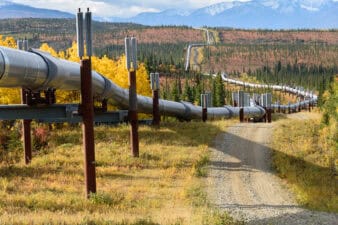PrairieSky Royalty (TSX:PSX) currently has one of the largest independently owned portfolios of mineral title and oil and gas royalty interests in Canada. The company is focused on encouraging third parties to actively develop royalty properties. PrairieSky strategically seeks additional crude oil and natural gas royalty assets that provide the company with medium-term to long-term value enhancement potential. This includes the acquisition of crown interest lands for purposes of complementing the company’s fee title land base.
Low-risk operations
The company does not directly conduct operations to explore, develop or produce petroleum. Rather, third party development of the royalty properties provides the company with royalty revenues as petroleum, natural gas and associated substances are produced from such properties. The company’s costs are primarily administrative expenses, corporate income taxes, and production and mineral taxes.
Costs related to upstream drilling, equipment, production and asset retirement obligations are not incurred by the company. Instead, these costs are incurred by the third parties who conduct activities on the royalty properties.
Strategic revenue growth
The company’s objective is to generate free cash flow and growth for shareholders through indirect oil and gas investment at a relatively low risk and low cost to the company. PrairieSky achieves this objective by focusing on organic growth of the company’s royalty revenue from the Royalty Properties and proactively monitoring and managing the company’s portfolio of royalty properties.
The company generates efficiencies with a focus on managing controllable costs and selectively pursues strategic business development opportunities that are relatively low risk to the company and accretive to shareholders. The company’s revenue stream is derived predominantly from royalties payable by lessees and working interest owners from crude oil and natural gas production on the royalty properties and revenues derived from related activities.
Capital-light business model
The company does not conduct any drilling activity and is not responsible for making any capital expenditures with respect to the royalty properties. The company receives royalty revenue based on the production performance of wells, with the calculation of such royalty revenues payable based on the market price of oil and natural gas. Through certain contractual arrangements with third parties, the company is able to receive a royalty percentage share of production from the royalty properties as a physical or in-kind delivery of hydrocarbons.
The company’s royalty revenue is substantially derived from lessor interests in respect of producing wells located on the company’s approximately 7.8 million acres of fee lands. Lessor interests provided approximately 63% of the total royalty revenue of the company, of which royalty revenue derived from production of liquids and natural gas accounted for approximately 79% and 21%, respectively.
In 2020, the lease rental income associated with the lessor interests was $5.9 million and lease issuance bonus consideration was $5.8 million. The company also holds approximately 26,000 acres of crown interest lands predominately in Alberta which were acquired to complement the company’s fee lands and to build land positions in strategic areas for purposes of royalty interest transactions.
Overall, PrairieSky owns irreplaceable land and has a capital-light business model. This should serve the company’s long-term shareholders well.






